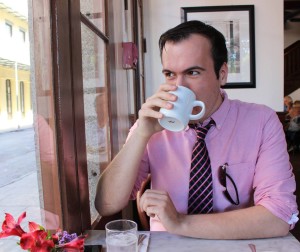Keeping up with the Joneses
With each passing day, the Tinkham Veale University Center is developing from an organized collection of steel and glass into the future facade of a Case Western Reserve University landmark. The university offices and student organizations that will occupy the space mostly have been decided and inside tours already have been provided to select members of the Case Western Reserve community.
Since its groundbreaking, the developing university center has rarely left the limelight, and it served as a destination of interest during Homecoming Week. But the new structure isn’t the lone occupier of central campus. It exists parallel to the Kelvin Smith Library and—more importantly—Thwing Center, which will remain the university’s only student center even once the doors of the Tinkham Veale University Center open.
Campus administrators began meeting last year to discuss the future of Thwing Center, recognizing that it will soon have a competitor just outside of its backdoor. The aging building currently serves as the home to almost all of the university’s undergraduate student organizations, such as the Undergraduate Student Government, University Program Board, University Media Board and Class Officer Collective. From the Center for Student Engagement and Learning to the Office of Student Activities and Leadership, the building also houses many student-focused departments.
While the majority of these organizations will move to the new digs, some will stay. Much of the space in Thwing Center will be vacated, leaving abundant opportunities for new offices to enter the structure. The Division of Student Affairs, which oversees Thwing Center, has identified it as a component of its first strategic plan in nearly two decades. As a result, students and staff members have gathered to brainstorm a shared vision for the future of the building.
Moving forward, Thwing Center must avoid becoming a duplicate of the Tinkham Veale University Center. Instead, it must forge a new identity, in which it continues to serve students but through a revised offering of services and tenants.
Because spaces will open throughout the building, the structure could easily become a one-stop shopping destination for essential undergraduate student services. What if the Career Center and the Office of Student Employment were next door neighbors? What if a staircase was the only obstacle separating Undergraduate Studies from Access Services?
The current layout of the Case Western Reserve campus forces students to traverse the Case Quad each time they want to conduct a simple office visit. Utilizing Thwing Center as a centralized hub would reduce student confusion regarding the location of essential services. It also would place student-focused departments within arm’s reach of each other, which would spur collaboration among offices that serve the same constituency yet rarely connect.
With its student-focused staff and ample meeting space, Thwing Center must continue to be accessible to undergraduate students. The building requires investment, such as new furniture, paint and infrastructure. But if these actions are executed, Thwing Center has an opportunity to not only continue—but increase—its engagement with the student body.
The opening of the Tinkham Veale University Center should not mark the end of Thwing Center. Rather, it should represent the beginning of a mutually beneficial relationship, in which both buildings are irreplaceable elements of the undergraduate experience.
-Tyler Hoffman
EXECUTIVE EDITOR

.
Fourth-year medical anthropology student Tyler Hoffman has served as Executive Editor and Publisher of The Observer since April 2012. As Executive...

